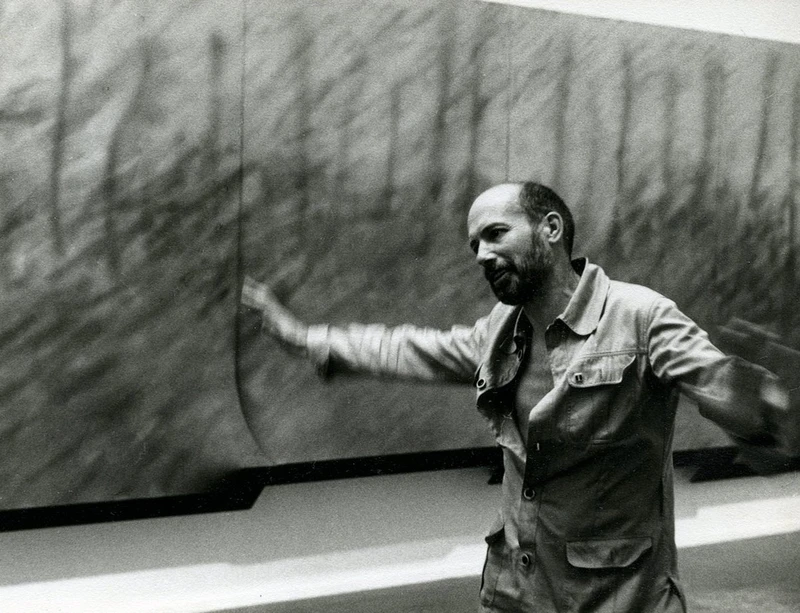Richard Smith


b. 1931, United Kingdom
d. 2016
Richard Smith (1931-2016) was one of the most influential artists of his generation. After studying in the 1950s at the Royal College of Art, Smith stood apart from the Pop Art movement of the 1960s by combining imagery found in the commercial landscape with an expansive abstract painting language very much his own. He gained critical acclaim for extending the boundaries of painting into three dimensions, creating sculptural shaped canvases with monumental presence, and kite paintings which questioned painting’s edge and the relationship between canvas and support. Of these works, Barbara Rose said, “inevitably they echo the verticality of man’s own gravity-determined stance… These consistent allusions to the human condition prove that abstract art is not necessarily divorced from man’s experience.”
Born in Hertfordshire in 1931, Richard Smith was awarded the Harkness Fellowship in 1959 which facilitated his move to New York, where he had his first solo show at Green Gallery. Smith had a 1966 retrospective at the Whitechapel Gallery and participated in some of the most important exhibitions of his time, such as Place at the ICA in 1959; Situation at RBA Galleries in 1960; and Painting and Sculpture of a Decade at Tate in 1964. After being awarded the Grand Prize at the 9th São Paulo Biennial in 1967 and participating in Documenta IV, Kassel in 1968, Smith represented Britain at the 1970 Venice Biennale and was awarded the CBE in 1971. Seven Exhibitions 1961-75, a major retrospective, was held at Tate in 1975.
Richard Smith's work is extensively held in public collections including the Arts Council England; The British Museum, London; Metropolitan Museum of Art, New York; the Museum of Modern Art, New York; Tate, London; Victoria and Albert Museum, London; Walker Art Center, Minneapolis; the Whitney Museum of American Art, New York; MIT, Boston; and Philadelphia Museum of Art.